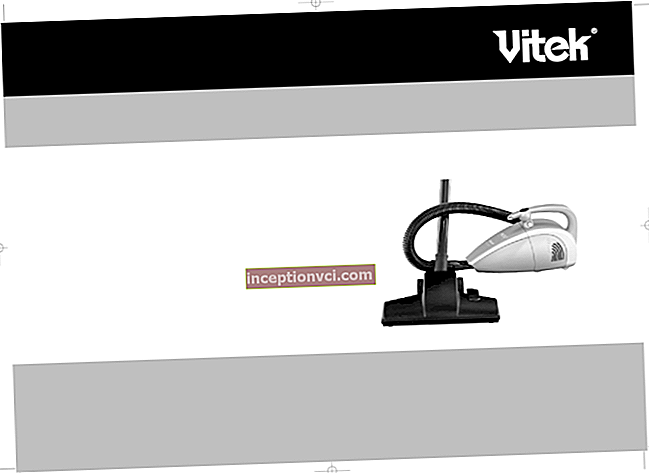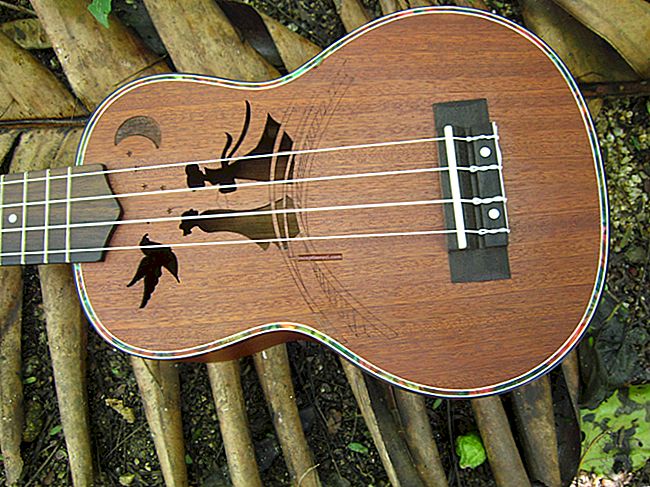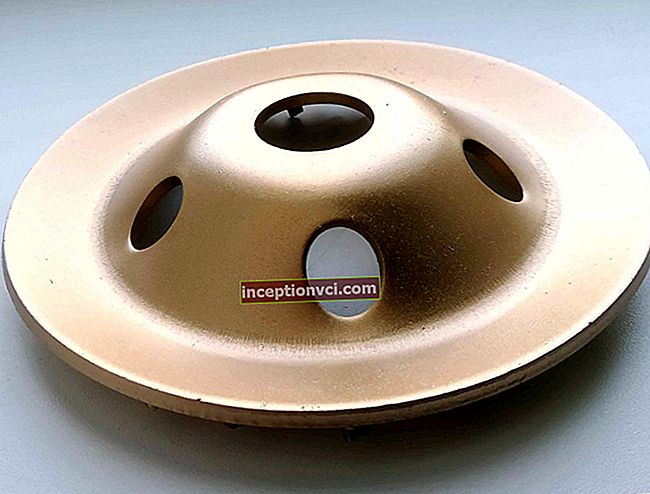Climbing on one zhumar
The most common types of extreme activities that regularly require rope climbing are mountaineering (both sports and industrial) and speleotourism. Obviously, to carry out such a lift, first of all, you need to have at your disposal a rope securely (though sometimes not very) fixed at the top or, as it is also called, a railing. Those who are somehow connected with the use of climbing ropes know perfectly well that climbing it is like a rope, i.e. what is called by hand is quite difficult, but at a great height it is already not very realistic, since the diameter of such a rope rarely exceeds 10-11 millimeters.
Therefore, in order to make a comfortable and safe ascent, the use of additional means is necessary. Until not so long ago, these means were all sorts of grasping knots, which were tied around the railing rope with loops from a cord. But the convenience of their use was not great, so over time, the nodes were replaced by technical means of lifting - clamps.
How does the rope climb happen? There are a great many lifting options themselves, but they all boil down to alternating loading of the clamps and moving up the one that is not loaded at the moment. (I think that from what has been said it is quite clear that there should be two clamps). In this case, the hands serve only to move the clamps along the rope and maintain balance, and the lifting is carried out due to the strength of the legs, for which loops of sufficient length, the so-called "stirrups", are fastened to one or both clamps. The stirrup can be under one leg or under both legs at once. In mountaineering, a ladder is often used as a stirrup.
We will begin to consider various types of rope climbing devices with the most common of them - a zhumar. From its name comes the term "zhumarit", which in extreme circles means "to climb up the rope." So, Jumar (actually JYumar is correct, since Jycy and Martin were its inventors, from whose names the name of the device comes from).

This is a technical device that can freely slide along the rope to one side and is securely fixed on the rope when you try to slide it in the opposite direction. Any other clamp or block-roller has the same properties, but the jumar is equipped with a handle for a comfortable hand grip. It is this feature that makes it the main lifting device, regardless of the conditions in which it became necessary to climb up the rope. In addition, this clip can be easily installed and removed from the rope with one hand, which is very important when re-belts in awkward places. Panacea? Of course not, you can completely do with other clamps. But, nevertheless, in the presence of a zhumar, climbing the rope will be as convenient and fast as possible.
The main element of the jumar is a movable cam, which usually has notches or spikes on its body. The cam is fixed on the axle in such a way that it is pressed when the jumar moves upward, and leans back when it moves downward, while the rope is pressed against the jumar's chute and at the same time the notches or spikes are pressed into the rope sheath, which in total ensures the fixation of the device. Such a zhumar design allows it to work even on a rope stretched from below, while the clamps that bend the rope for fixation, if loaded below the device, begin to slip, or even collapse altogether.The presence of spikes or notches on the cam ensures reliable operation of the device on a dirty and / or wet rope, which is especially important in caves or when used on snow.
However, the zhumar is in no way designed for dynamic loads. In the event of a jerk or excess of the maximum permissible load on the device, the outer sheath of the rope breaks and slips, making it unsuitable for further use.
As already mentioned, for lifting, it is desirable to have two clamps in order to reposition them alternately. In mountaineering, usually, without further ado, take two zhumars - and go. With such a lift, it is usually not even necessary to release the handles of the clamps; in fact, you need to hold on to them to maintain balance. In this case, it is desirable to have zhumars "left" and "right", for use with the same hands, respectively. They do not differ in design, but they are structurally made mirrored to each other.
In speleology, it is often necessary to go through narrow areas, where the use of two zhumars, each of which must be moved by hand, is difficult and sometimes impossible. Therefore, most cavers use a chest clamp as a second lifting device.

According to the principle of operation, this clamp practically does not differ from the jumar. Its main difference is the absence of a handle and openings in one plane with the body of the clamp for attaching carabiners. The lower carabiner attaches to the load loop of the gazebo, and the upper carabiner attaches to the so-called. "braces" that hold the device in working position. By the way, often the upper carabiner is not used, and the suspender sling is inserted directly into the hole in the clamp, thus making the system less cumbersome.

A chest harness is also sometimes used to support the chest clamp.
When moving, the zhumar, which usually stands higher along the rope, moves with one or, if desired, two hands at once, and the chest clamp is pulled up by the actual suspenders, i.e. shoulders and does not require additional hand intervention. The rope in the chest clamp, as well as in the zhumar, can be easily fastened with one hand.
The clamps of the "shunt" type are fundamentally different from the already discussed lifting devices. In such devices, the movable cam itself is the load, while the body of the device is loaded in the girdle and in the chest clamp. The shunts do not have notches on the cam and when clamping the rope they bend it a little. It follows from this that the shunt will not be held on a strongly tensioned railing, although a sharp tension on the rope on which the shunt is used will not lead to its destruction, but will only cause slippage. In addition, the shunt is a closed device, i.e. it cannot be removed or installed without detaching from the harness.
All these properties distinguish the shunt from the bulk of clamps, its relative suitability for self-belaying. True, this suitability is a source of endless controversy, since there are a number of circumstances in which the shunt does not cope with the function of a safety device. However, from personal experience I will say that for self-belay when moving along an inclined railing or as an alternative to a grasping knot when descending a rope, the shunt copes without any complaints. Another feature of the shunt is its suitability for double rope use.

As you know, clamps often have to be used not for direct ascent along a rope, but for organizing auxiliary or emergency systems for lifting a load (in the case of rescue work, a victim) or tensioning horizontal railings necessary to overcome certain obstacles. In this case, the main role of the clamp is reduced to holding the already selected rope without recoil.When the load is small, it is quite possible to use ordinary zhumars or shunts, but if the load is significant, for example, when lifting a victim with an accompanying person or when organizing a railing, when the rope is pulled to the state of the string "to ring", it is better to use special clamps designed for such purposes ... For example, a clamp such as a "microsender" is designed for an ultimate load of more than a ton, and it not only withstands such stresses itself, but also does not cut the rope.

Of course, this device is far from the only one of its kind. There are many analogs, which cannot but rejoice, if we take into account its very considerable, micro-sender, cost.
As for the suitability of such devices for climbing a rope, they are quite suitable, but still their main purpose is not that.
Another clamp that, from my point of view, is worth paying attention to, is the so-called "drop clamp". It is quite simple in design, therefore it has a relatively low price, which makes it very popular. However, most often the drop is used not for climbing a rope, but as a means of self-belay when performing high-altitude work. It is on this moment that I wanted to draw attention. "The drop clamp is not a safety device" - it is written both in the instructions for use and on the manufacturers' websites. If you insure yourself with this clip, then in no case should you use a long mustache of a self-belay, but you must fasten it directly to the arbor or chest harness in order to exclude the dynamic load on the device. For clarity, I present a photo of the rope broken by this clamp.

The drop clamp copes with the function of the lifting device on a par with the other clamps. It is true that you should be careful here, too. a non-spring-loaded cam does not hold without load, and the device sometimes goes down the rope.
At the end of the review, I will mention one more clamp, which stands out somewhat from the total mass of lifting devices. This is the so-called "tiblock" from Petzl.

Its uniqueness lies in the fact that the carbine itself is used as a clamping cam, and there are no moving parts in the tiblock design. This device allows you to work with the entire main range of ropes used in extreme activities. The main advantage of the Tiblock is its record low weight (39 grams) and miniature dimensions. Of course, it is not very convenient to use a tiblock as the main clamp, since its design introduces some specifics into the process of climbing the rope. But here is how an emergency or spare clamp (clamp "just in case") a tiblock is indispensable, since it is difficult to find another full-fledged lifting device that can be thrown into a pocket, and then forgotten there, and remember only when (and if) it appears necessity.
Note: "What to take on a hike - TOP 16 necessary, but lightening the backpack as much as possible"








